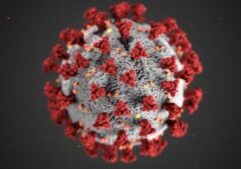Mediation and Metabolism
by Judge Elaine Gordon (ret.)

Elaine Gordon is a retired Superior Court judge and founder of Gordon ADR. She is a member of the National Academy of Distinguished Neutrals and a Distinguished Fellow of the International Academy of Mediators.
A Note from Judge Gordon
Welcome to autumn in New England. Where did the summer go?
I hope you will enjoy this month's article. As a board member of the International Academy of Mediators, I am truly blessed to pick up so many great ideas from some of the world's best Mediators.
I also want to thank the lawyers, with whom I have the privilege to serve, for once again voting me the top mediator in the “Best of” polling in the Connecticut Law Tribune. Our firm, Gordon ADR, was also named the top ADR organization. We are humbled by the recognition and will continue to do our best to earn your trust.
Now if only my Cubs can make it to the World Series again!
One of this year’s best-selling books is “When: The Scientific Secrets of Perfect Timing” by Daniel H. Pink. In an NPR interview, Pink explains that our metabolic stages affect our mood and actions throughout the day. “You see a pattern of mood where we have an elevated mood in the morning. It drops considerably in the early afternoon and rises again late in the day. It’s called Peak-Trough-Recovery.”
Does this pattern sound familiar? Mediators see it all the time. It plays out as three phases during the negotiation of litigated cases: The Opening, the Middle Muddle*, and the Closing.
During the opening, lawyers often take aggressive positions while also spending the morning sharing information. In these early rounds of negotiation, lawyers try to persuade the other side while justifying their position. Facts are supplied, secrets sometimes shared, and damage calculations are discussed.
The Middle Muddle usually starts about lunchtime. There is little new information to share. Everyone is still far apart. Have you ever said, “It’s 1:00 pm, we should have gotten further then this!” Hope and optimism flag and impatience sets in. Other than the Mediator, no one can see a path to settlement. But no one leaves or gives up. The Parties keep moving closer, but they don’t see a gap that looks closeable. Why? Because they are in the trough. Glucose levels have dropped and with that drop comes a corresponding fall in our ability to remain focused and constrain our inhibitions. Decision-making becomes harder. Each side is frustrated.
You hear statements like: “The other side has taken too long to concede too little” or “The other side is unreasonable” or “The other side better move.” But with the help of a skilled Mediator, the participants still agree that this case needs to be settled today!
Then, thankfully, sometime around 3:30 pm, metabolic recovery sets in and the negotiations pick up. According to Pink, during this phase, we become more creative. We’re in a better mood and less inhibited. During this phase, larger moves might be made or perhaps bracketing is suggested. Everyone wants to close the deal. Now, with rising energy and an elevated mood, the Parties, with the Mediator’s touch, make their way toward settlement. Closing the deal is hard work but restored energy makes it possible.
As the lawyers write up a term sheet, no one mentions biology or biorhythms. At times, the lawyers might jokingly blame each other for the time it took to settle the case. But now you know all about the science of metabolism.
*With thanks to Gene Moscovitch, of the International Academy of Mediators, for coining the term, “The Middle Muddle.”
You may also be interested in ...





























